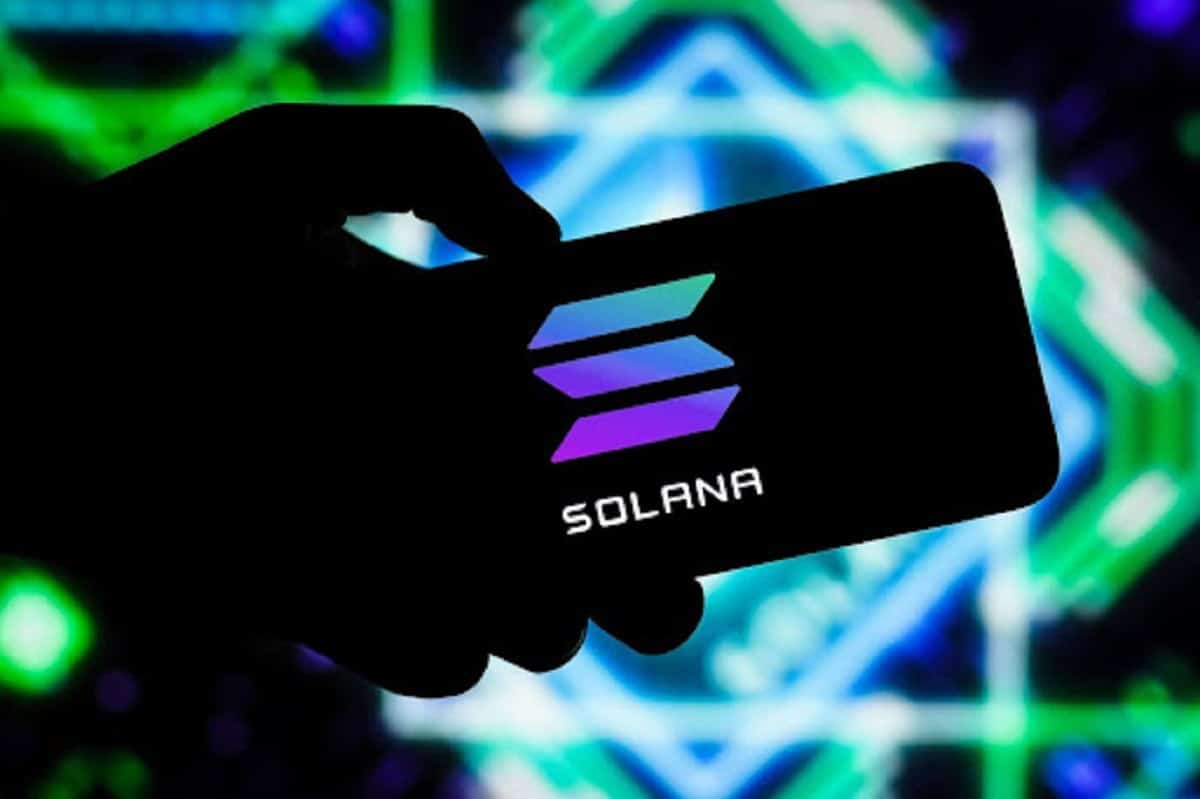The internet as we know it is evolving, and a new player is changing the game: DePIN on Solana
This innovative fusion of decentralized physical infrastructure networks and Solana’s high-performance blockchain is setting the stage for a transformative leap in the way we build and use the internet. DePIN on Solana is not just another technological advancement; it’s a revolutionary step towards creating a more decentralized, scalable, and efficient internet.
In this article, we’ll explore how DePIN on Solana represents a paradigm shift, offering the potential to revolutionize digital infrastructure and redefine the internet for the next generation.
What is DePIN (Decentralized Physical Infrastructure Networks)?
DePIN on Solana represents a groundbreaking approach to internet infrastructure by decentralizing the physical elements that power the internet.
At its core, DePIN enables individuals and companies to own, control, and operate physical infrastructure such as routers, servers, and data centers, creating a more distributed and resilient network.
This model challenges the traditional reliance on centralized entities that dominate internet services, giving users more power and control over the digital ecosystem.
The core concept behind DePIN is to democratize internet services by allowing anyone to participate in the network’s operation.
This decentralization not only reduces the reliance on large corporations but also opens the door to innovation, as new participants can introduce diverse solutions. Additionally, DePIN on Solana leverages the blockchain’s capabilities to provide greater security and privacy, ensuring that data and transactions remain protected in a decentralized environment.
Key benefits of DePIN include the potential for reduced costs, enhanced security, and privacy. By eliminating centralized control, DePIN fosters an ecosystem where users have more freedom, and innovation can thrive without the constraints of corporate monopolies.
Why DePIN on Solana?
One of the most highly performing blockchains available worldwide powers DePIN on Solana. Solana is the ideal basis for DePIN since it can supply the scalability and throughput required for distributed physical infrastructure systems.
Proof of History (PoH), Solana’s special consensus method, enables fast transaction speeds and network efficiency, therefore supporting the backbone required to manage the data-intensive needs of DePIN applications.
Any infrastructure network depends on speed and scalability; hence, Solana provides both spheres. Solana can manage the enormous volume of transactions needed by DePIN applications by processing over 65,000 transactions per second, so guaranteeing flawless functioning over scattered networks.
Maintaining the integrity and reactability of a distributed network depends on this degree of performance.
Moreover, for DePIN on Solana operations, Solana’s minimal transaction fees make it a reasonably affordable option. Solana maintains minimal fees unlike other blockchains with high transaction costs; this is essential for maintaining a sizable, distributed network.
This economy helps participants run their physical infrastructure without running major overhead.
Solana’s ecosystem also compliments DePIN on Solana with ideas in line with the dispersed infrastructure strategy.
Important initiatives on the network, including content delivery networks (CDNs) and distributed storage solutions, offer the means to improve the performance and accessibility of DePIN’s dispersed services.
These connectors support the expansion of distributed applications and enable consumers to have a more flawless interface.
How DePIN on Solana Works: A Technological Breakdown
DePIN on Solana creates a more distributed and resilient internet by using dispersed infrastructure.
The infrastructure layer lets consumers provide the network with resources such bandwidth, storage, and computing capability, therefore turning regular people and companies into players in the worldwide digital economy.
Contributing these resources helps members power the DePIN system, therefore generating a distributed network more scalable and strong than conventional centralized ones.
Tokenization is important to DePIN on Solana. Various token models—including governance tokens, utility tokens, and awards in the form of native Solana-based tokens—incentive participants.
These coins lay an economic layer that guarantees the network’s effective running. By means of resource sharing, staking, or governance, they enable users to affect the course of the network while receiving benefits.
Automating DePIN on Solana’s operations depends critically on smart contracts. These self-executing agreements allow automatic resource allocation, payment settlements, and scaling among other things.
A smart contract might, for instance, automatically assign bandwidth or storage to the highest bidder or handle payments among participants without middlemen. This automation simplifies the operations of the network, therefore increasing its efficiency and lowering user administrative load.
Some key use cases of DePIN on Solana include:
- Decentralized Cloud Computing and Storage: By allowing users to contribute their excess computing power and storage, DePIN enables the creation of a decentralized cloud infrastructure. This eliminates the need for centralized cloud providers, offering more control and privacy to users.
- Peer-to-Peer Internet Access: DePIN facilitates peer-to-peer internet access by allowing individuals to share bandwidth and connectivity. This helps create a more distributed internet, especially in underserved areas.
- Content Distribution Networks (CDNs): Powered by decentralized nodes, DePIN allows for the creation of decentralized CDNs that can deliver content more efficiently and reliably, reducing the reliance on centralized service providers.
Challenges and Limitations of DePIN on Solana
Various challenges and limitations of DePIN on Solana includes;
- Scalability issues
- Adoption barriers
- Security concerns
- Energy consumption
Scalability Issues
While DePIN on Solana offers promising advancements for decentralizing internet infrastructure, several challenges and limitations must be addressed for widespread adoption.
Despite Solana’s high throughput, the practical scalability of decentralized physical infrastructure could face hurdles as the network grows.
As more participants join the system and demand for resources increases, ensuring that DePIN on Solana can handle this load without compromising performance will be critical.
Adoption Barriers
One of the main adoption barriers for DePIN on Solana is the need for significant user education. The concept of decentralized infrastructure and how individuals can contribute resources like storage or bandwidth may be difficult for many to grasp.
Additionally, regulatory challenges could arise, as decentralized systems often fall into grey areas regarding data protection, compliance, and jurisdiction.
The cost of setting up decentralized infrastructure, such as installing and maintaining hardware, could also deter potential participants, particularly smaller businesses or individuals without technical expertise.
Security Concerns
Security remains another concern for DePIN on Solana. While decentralization can enhance security by removing single points of failure, it also opens up new risks.
Individual nodes can become targets for attacks, and trust between participants becomes a more significant issue in a network where no central authority oversees operations.
Ensuring the integrity of these nodes and the network’s trustless system will be a constant challenge.
Energy Consumption
Finally, energy consumption is a potential environmental concern. While decentralized systems reduce reliance on centralized infrastructure, they still require hardware to run and maintain the network.
As more nodes are added, the overall energy consumption could increase, potentially negating some of the environmental benefits. Balancing the need for decentralization with sustainability will be key to the long-term viability of DePIN on Solana.
How Can You Get Involved with DePIN on Solana?
Becoming a Node Operator
Participating with DePIN on Solana presents interesting chances for people and companies to help to expand distributed internet infrastructure. Becoming a node operator is one of the main ways one may take part.
Running physical nodes that supply bandwidth or storage will help the DePIN ecosystem grow.
Usually requiring technical knowledge and an upfront hardware expenditure, setting up a node lets you directly help the distributed network and get benefits for your involvement.
Participating in Governance
Governance is another way DePIN on Solana gets one involved. You can stake tokens for voting rights as part of the DePIN ecosystem, therefore allowing you a voice in important network decisions.
Voting on protocol enhancements, resource distribution, and other strategic decisions influencing the network’s future shapes its present.
Participating in governance not only makes you actively involved in the DePIN ecosystem but also helps guide the path of dispersed internet infrastructure.
Investing in DePIN Projects
DePIN-related products and tokens developed on Solana also have investing possibilities. These initiatives use the distributed infrastructure DePIN provides and give investors an opportunity to fund innovation in this field.
Purchasing tokens or investing in DePIN-based projects will allow you to use the wider Web3 ecosystem and the possible expansion of distributed infrastructure while also helping DePIN on Solana to be developed.
Conclusion
DePIN on Solana is opening the path for a radical change in internet operation. DePIN on Solana seeks to create a more resilient and user-owned digital economy by aggregating decentralization, high speed, and scalability. This new paradigm presents a fresh perspective to the future of the web since individuals and companies may help to build infrastructure, engage in governance, and invest in creative ventures.
FAQ
What is DePIN on Solana?
DePIN on Solana is Decentralized Physical Infrastructure Network constructed on the Solana blockchain. It lets people and companies provide physical resources—such as storage and bandwidth—to a distributed internet architecture.
Leveraging Solana’s low cost transactions and great performance, this builds a more resilient, scalable, and user-owned network.
What code is used on Solana?
Solana creates its smart contracts in Rust and C programming languages. While C is utilized for lower-level operations, developers usually create distributed apps (dApps) using Rust, which offers security and speed; the Solana blockchain is tuned for high-performance transactions.
What is the best project on Solana?
Depending on the industry, Solana boasts several interesting initiatives. Among the best initiatives are Serum (decentralized exchange), Solend (loan protocol), and Mango Markets (decentralized funding).
Using Solana’s cheap fees and speed, these initiatives provide effective distributed finance and NFT solutions. Still, the best initiative is personal and based on personal interests; it is not objective.
Is Sui faster than Solana?
Designed with a distinctive consensus method emphasizing parallel transaction processing, Sui is a high-performance blockchain.
Although both Solana and Sui are intended for high-speed performance, Solana is known for handling over 65,000 transactions per second (TPS), whereas Sui’s architecture permits high throughput as well, however depending on the type of transaction being handled, its speed might vary.
Although Solana usually boasts a more established and bigger ecosystem, Sui’s creative approach to parallel execution shows great promise.



